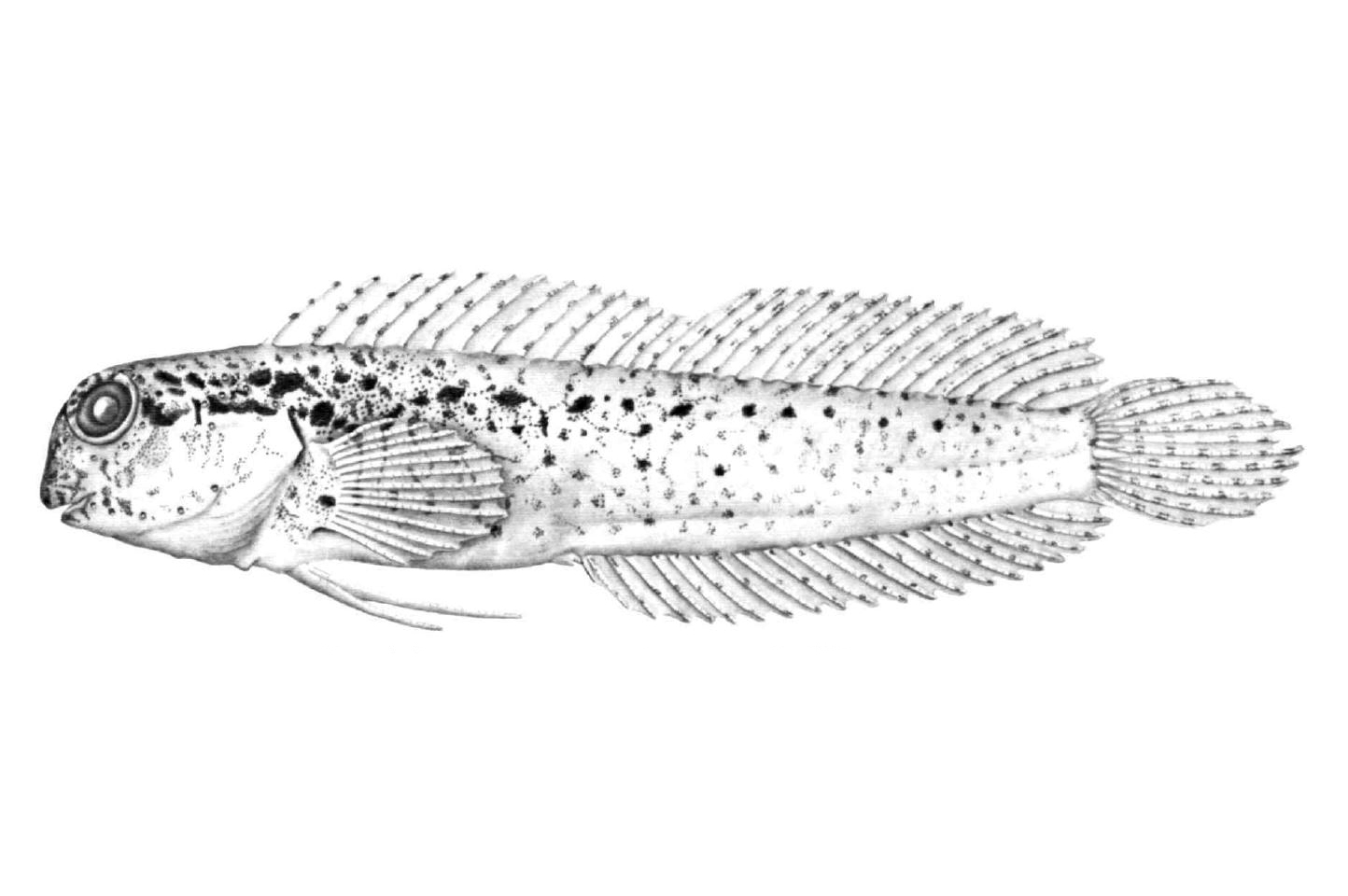Hyena Blenny, Parenchelyurus hyena (Whitley 1953)

Illustration a Hyena Blenny, Parenchelyurus hyena, from the Great Barrier Reef, Queensland. Source: J.R. Schroeder, Division of Fishes, Smithsonian Institution, United States National Museum. License: CC by Attribution-NonCommercial-ShareAlike
Cite this page as:
Dianne J. Bray, Parenchelyurus hyena in Fishes of Australia, accessed 23 Apr 2024, https://fishesofaustralia.net.au/Home/species/4753
Hyena Blenny, Parenchelyurus hyena (Whitley 1953)
More Info
|
Distribution |
Hope Islands to Palm Island, Queensland. Elsewhere the species occurs in the tropical, west Pacific - Philippines, Papua New Guinea. Although the Hyena Blenny is widespread, it is relatively rare, occurring under stones in the intertidal zone. |
|
Species Citation |
Graviceps punctatus hyena Whitley 1953, Rec. Aust. Mus. 23(3): 136, fig. 2. Type locality: Palm Islands, QLD. |
|
Author |
Dianne J. Bray |
|
Resources |
Hyena Blenny, Parenchelyurus hyena (Whitley 1953)
References
Allen, G.R. & Erdmann, M.V. 2012. Reef fishes of the East Indies. Perth : Tropical Reef Research 3 vols, 1260 pp.
Springer, V.G. 1972. Synopsis of the tribe Omobranchini with descriptions of three new genera and two new species (Pisces : Blenniidae). Smithsonian Contributions to Zoology 130: 1-31 figs 1-16 PDF Open access
Springer, V.G. 1981. Notes on blenniid fishes of the tribe Omobranchini, with descriptions of two new species. Proceedings of the Biological Society of Washington 94(3): 699-707.
Watson, W. 2009. Larval development in blennies. pp. 309-350. In Patzner, R.A., E.J. Gonçalves, P.A. Hastings and B.G. Kapoor (eds) The biology of blennies. Science Publishers, Enfield, NH, USA. 482 pp.
Whitley, G.P. 1953. Studies in Ichthyology No. 16. Records of the Australian Museum 23(3): 133-138 figs 1-4 PDF Open access
Williams, J.T. 2014. Parenchelyurus hyena. The IUCN Red List of Threatened Species 2014: e.T48342218A48359378. http://dx.doi.org/10.2305/IUCN.UK.2014-3.RLTS.T48342218A48359378.en. Downloaded on 17 September 2016.


